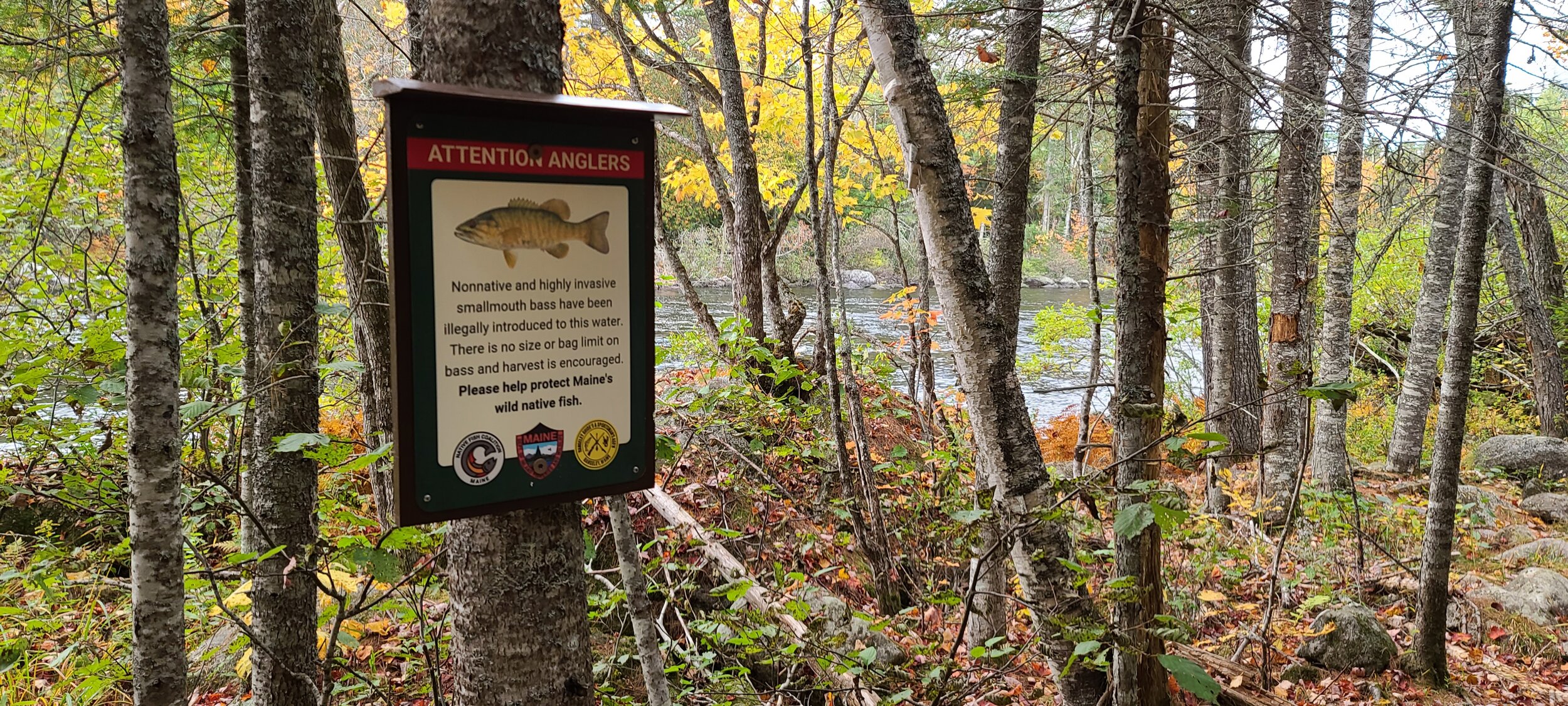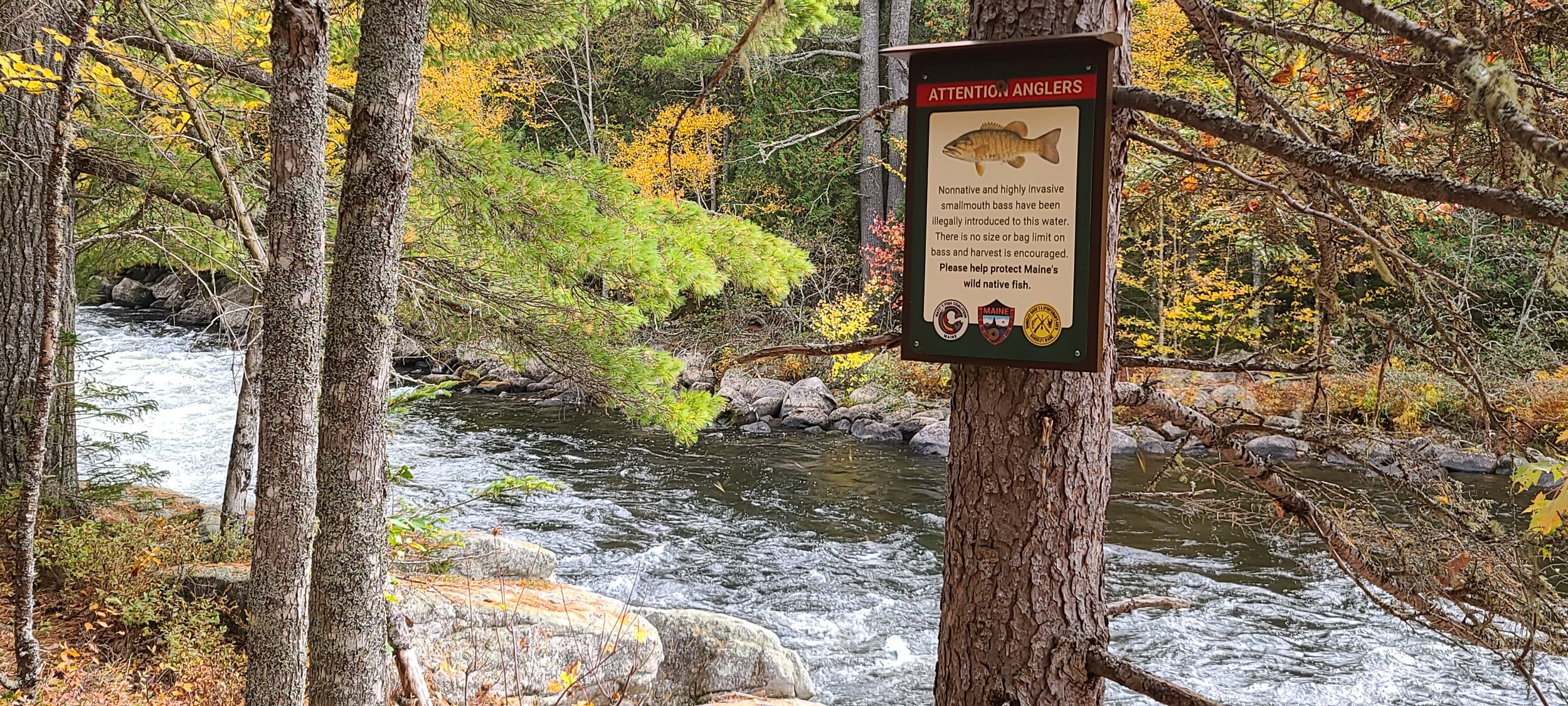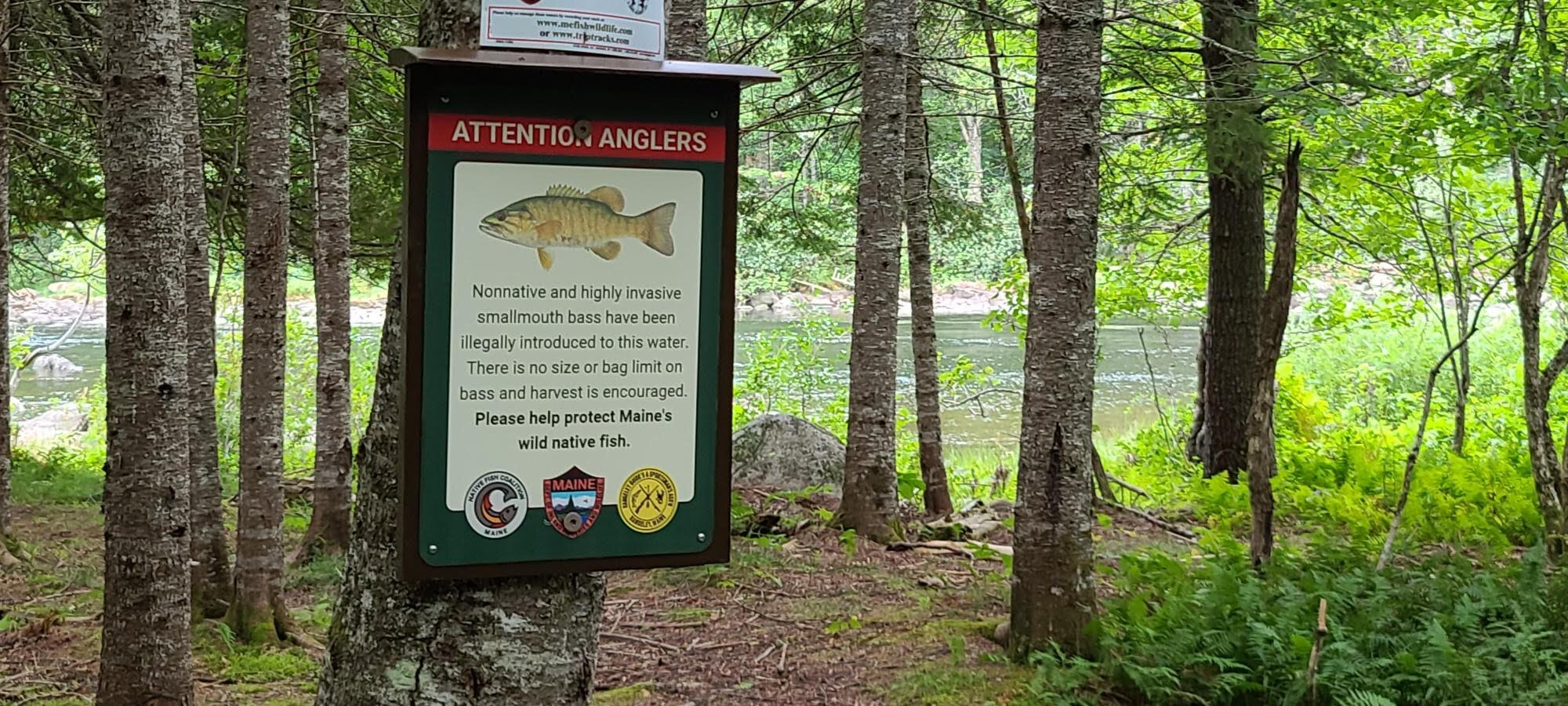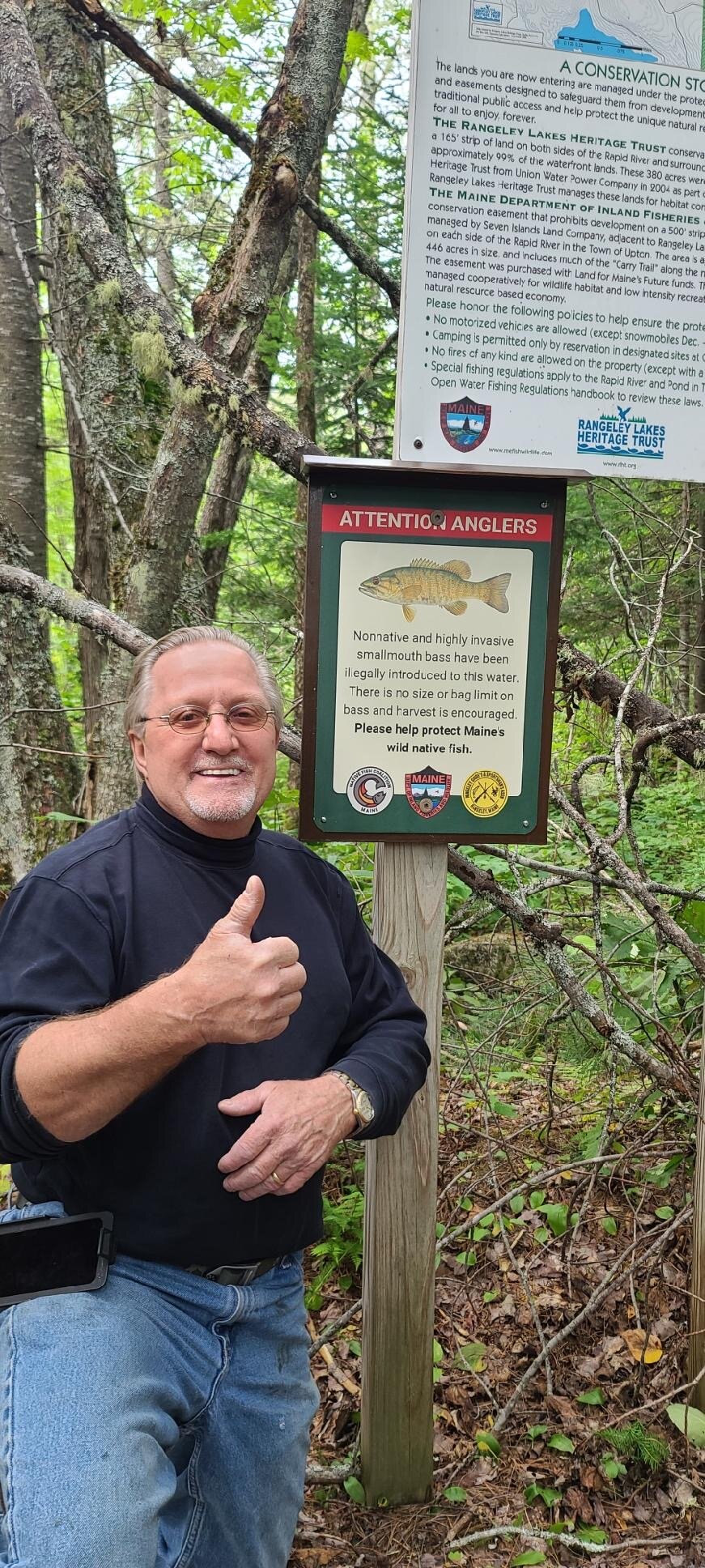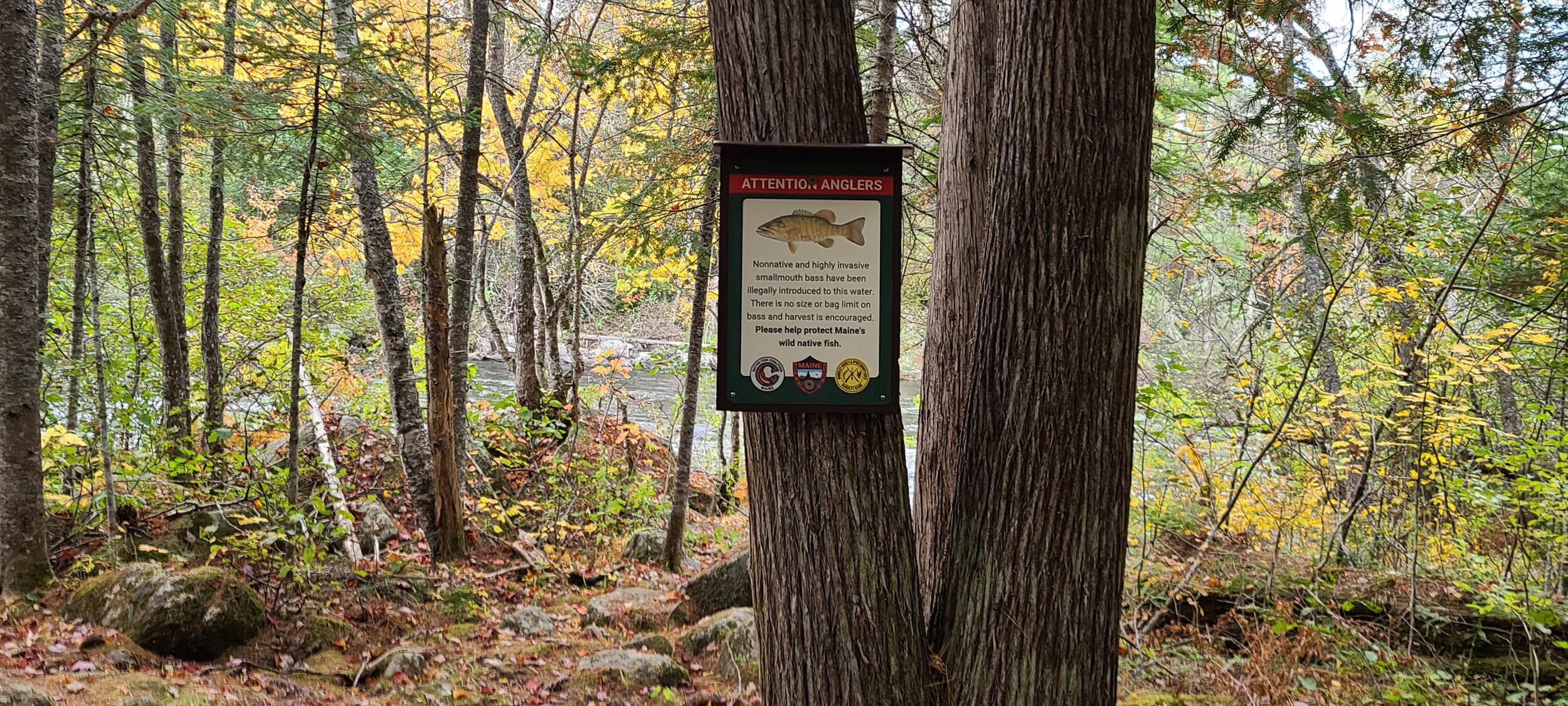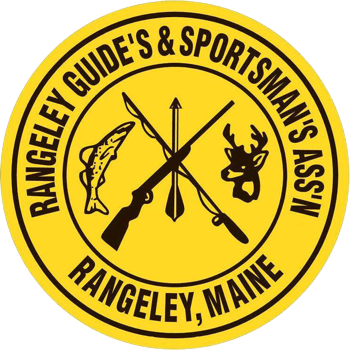Maine's Rapid River Gets Invasive Bass Signs
The now defunct Lower Dam on Maine’s fabled Rapid River. (Diana Mallard)
It would be fair to call Maine’s fabled Rapid River the finest wild native brook trout river in the state, and possibly the nation. It is also one of the best wild native salmonid rivers in the country. Few places in America offer anglers a better chance at catching a true trophy brook.
Unfortunately, nonnative and highly invasive smallmouth bass have infested the Rapid River. They entered the river from Umbagog Lake on the Maine/New Hampshire border. To be clear, the presence of nonnative bass in the Rapid River poses a significant threat to the native brook trout.
To be fair, the nonnative bass now found in the Rapid River are here to stay. While there is no way to get rid of them, we can however try to keep the population down to help the native brook trout. In addition to some flow changes that make the river less hospitable to bass, anglers can do their part by removing any bass they encounter.
Bass and brook trout don’t mix, at least well…
Maine law allows for the unrestricted harvest of bass in the North Zone where the Rapid River is located. If you can’t, or don’t want to, take them home, you can simply dispatch them and put them back in the river where something in nature will eat them.
As a result of the recent zone-wide no-limit on bass, there is no longer a regulation specific to the Rapid River in regard to bass in the law book. You have to look at the General Law to find it.
To inform anglers and others as to the presence of invasive nonnative bass, and encourage anglers to remove them when they are encountered, the Maine chapter of NFC worked with Rangeley Region Guides’ and Sportsman’s Association and Maine Department of Inland Fisheries to develop an informational sign for the Rapid River.
Working with Rangeley Lakes Heritage Trust, Rangeley Region Guides’ and Sportsman’s Association began posting the new bass signs on the Rapid River in early September 2020. If you are fishing the Rapid and encounter any bass, and feel comfortable doing so, please remove them to help preserve this wild native trout resource, and important part of Maine’s outdoor heritage.
